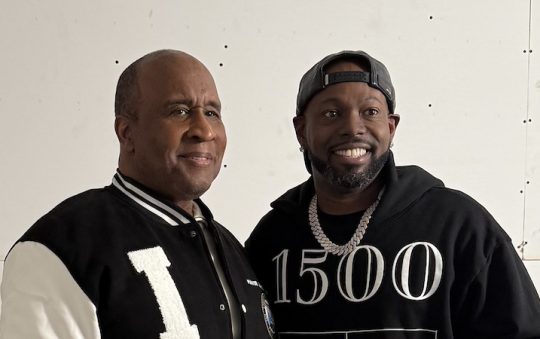
Public education has failed Black students. Tragically, by virtually any measure, they are behind all other groups, including immigrant Latino students who have been in the U.S. for only three years. At the federal, state and local levels there have been some programs that relate to African American students. However, such efforts did not, and still do not focus exclusively on their specific needs. Rather, Black students are always lumped with other so-called “disadvantaged” students based on familiar criteria-chiefly poverty, and have never received the care and targeted resources absolutely necessary for educational success.
On the other hand, Latino students designated as English Learners (ELL) have an advantage-especially in Los Angeles and other large urban school districts. Their increasingly large numbers and specific language-acquisition needs are officially recognized and funded. Not so for Black students.
Unless and until Black students are treated like their lives really matter, and get attention and resources commensurate with their needs, they will continue to receive an inferior education. Making this happen requires significant and sustained pressure on school districts first by the Black community itself. Of course, strong effective Black leadership is indispensable for leading and sustaining the broad political support crucial for bringing about such change. How can the non-education of Black students be reversed? It will take an unapologetic focus that generates broad concern and equitable resources for Black students to get the job done.
An article in the Black Star Project titled, “A Proposal: A Black American Public School System” (June 5, 2015) by Michael Holzman, offers a provocative conceptual alternative to the current public school model to improve educational outcomes for African American students. Those who may consider Holzman’s proposal naïve, or mere fantasy, downplay the crippling reality of what currently exists, i.e., education systems that virtually ensure failure for countless African American students.
Excerpts from Holzman article:
“The American education system has failed the descendants of enslaved Africans. Only 16% read at grade level in middle school (and only 12% of male African Americans do so). Just over half of male Black students graduate from high school in four years as compared to more than three-quarters of male white students. Twenty-one percent of young Black women graduate from college, but only 16% of young Black men compared to 31% and 30% for white women and men respectively. As a result of the failure of public schools to educate Black children, their lifetime earnings are reduced, on average, by over a million dollars, or a total of $5 trillion for this generation of the descendants of enslaved Africans as a whole.
This $1 million individual reduction in lifetime earnings is quantifiable because it’s the continuing harm resulting from centuries of slavery and an additional 150 years of Jim Crow and its lingering effects. As such, it can be taken as one component of the calculation of the figures for deserved restitution.
While the average per-student expenditure for Black students is less than $12 thousand, the amount spent on white students whose families are in the upper 20% of incomes can easily reach $30 thousand. Adding to that, the amounts spent by the latter on education activities outside of school hours—private lessons of various kinds, tutoring, educational travel—we can estimate the annual monetary educational disadvantage of Black students as at least $25 thousand. Given the approximate K-12 Black enrollment of seven million, the total annual shortfall is in the range of $175 billion. If this $175 billion were available for the education of Black American children, how could it be used to eliminate the penalty for being educated while Black?
One idea would be to utilize the existing legal framework underpinning the charter school movement to create a national school network for American descendants of enslaved Africans: The African American Public School System. These schools would be funded in each locality by the usual local, state and federal contributions, supplemented by a National Black Educational Fund (NBEF), capitalized with restitution contributions. The total per student expenditure would vary by locality, but would everywhere be sufficient at a minimum for universal pre-kindergarten, all-day literacy-oriented kindergarten, challenging college preparatory curriculum with after-school, Saturday and summer classes; highly selective effective teachers supported by an ongoing subject area and pedagogical professional development and fine facilities.
Use of advanced technology would enable geographically neutral delivery of resources, including administration so that Black students in a small elementary school in the rural South would have educational resources equivalent to those of Black students in Northeastern and Far Western suburban Black American public schools. (Do such schools exist?
Graduates of Black American public schools admitted to college would be provided with tuition and living expenses. Others would receive support for job training, including apprenticeships.
Increases in Black high school and college graduation rates would result in higher Black annual and lifetime earnings, with consequent improvements in health, family and social life, childhood well-being in the Black community and increased contributions to governmental revenue at all levels. In this way, the education system, the deficiencies of which now drive the Black poverty cycle, would instead serve as a foundation for the prosperity of the Black community.”
(Three years ago, The Leadership Education Fund released a report, Cheating Our Future: How Decades of Disinvestment by States Jeopardizes Equal Educational Opportunity. It documents the massive resource disparities in public schools nationwide.)







